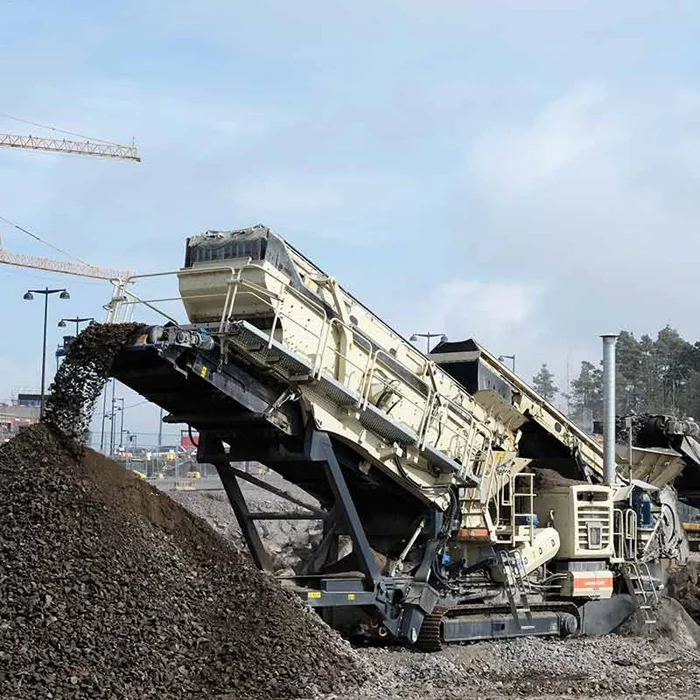Rock crusher machines are essential in order to help provide construction projects with the correctly sized aggregate for their unique project needs. Understanding the different stages of rock crushing is essential so that your projects run smoothly and cost effectively while also maximizing the lifespan of your equipment.
What Are the Stages of Rock Crushing?
Rock crusher machines are a key tool in mining and construction operations. These machines operate within a few different stages:
Primary Crushing
In this stage, rock crushers such as jaw crushers are used to reduce the size of large rocks into smaller rock particles for easier processing. This typically involves using mechanical force to break up rock pieces into smaller sizes.
Rock crusher machines used in the initial stage often utilize two powerful jaws that compress rock between them, which then creates a variety of different sized rock particles. These rocks are then fed through the rock crusher machine’s feeder at a constant rate. The rock crusher also features an adjustable outlet setting that lets you decide how small or large you’d like your crushed rock particles to be.
The primary rock crushing stage is one of the most important steps in any mining operation as it sets the stage for all the other phases of rock crushing that follow. Crushed rock is used in a wide array of applications, ranging from road construction to agricultural use and more. It’s important that this step is done correctly so that each subsequent stage can be successfully completed.
Importantly, different types of rock require different levels of force during primary rock crushing in order to achieve desirable results. Soft rocks like limestone require less force while hard materials like iron ore need more power to effectively break them down into smaller pieces.
Secondary Crushing
The secondary rock crushing step is the most important of all rock crushing stages, as it directly affects the product quality and size range. This stage consists of two rolls that typically operate at different speeds in order to reduce the rock material to smaller particles. The rolls are often made out of heavy-duty steel and are self-aligning to ensure a smooth operation.
Secondary rock crushing also allows for more accurate control over particle shape and size distribution than any other rock crushing stage due to its ability to produce a wide range of particle sizes in various settings.
The rock particle size is determined by the gap between the two rolls, which can be adjusted by shifting one roll relative to the other. This is done with a hydraulic jack or toggle plate adjustment mechanism. The rock particles produced have a wide range of sizes, from small gravel pieces up to large boulders depending on the rock type being processed and the desired end product size. It is important to understand the project requirements and the desired aggregate size and makeup prior to completing this step.
Tertiary Crushing
The tertiary rock crushing stage is the final step of rock crushing. This phase requires special rock crusher machines to reduce oversized rock into even smaller pieces that are easier to manage and designed for specific applications. Tertiary rock crushers are typically used in aggregate applications, where they reduce rock into gravel, sand, and other finer particles. They use a combination of compression and attrition forces to crush rocks from large sizes down to fine grains.
The rock crusher machine used for tertiary crushing will vary depending on the size of the fragments being processed and the desired output size. Generally, these machines use compression force to break up larger particles into more manageable sizes. Compression force is applied by two plates within the machine in order to create pressure that breaks apart any material between them. The material is then pushed through a gap in one of these plates into a smaller chamber below where it is further broken down using attrition forces caused by several rotating shafts within the machine.
Other Considerations
To maximize productivity while minimizing maintenance costs, operators must adjust several key settings on their rock crushers including:
- Feed rate
- Rotation speed
- Grinding size
- Screen opening size
With proper adjustment of these settings according to the material type and desired output size, these rock crushers are capable of producing finely crushed material suitable for creating asphalt aggregate for a variety of industrial uses.
Rock Crusher Machines Improve Each Stage Of The Crushing Process
Understanding each stage of rock crushing is essential for the efficient operation of rock quarries and other related industries. For instance, during the primary stage, rock size must be monitored carefully to ensure that only rocks that are within certain size parameters are accepted in order to avoid problems downstream. Similarly, during the secondary and tertiary crushing steps, rocks must be carefully screened so as not to overload equipment or allow large chunks of rock to pass through without being crushed properly.
Moreover, understanding each step allows operators to adjust settings on their rock crushers to maximize their efficiency and productivity levels. For example, when dealing with soft rock materials such as limestone, operators may need to manipulate the speed at which they feed material into the machine so that its output meets industry standards.
Speak With The Rock Crushing Experts at Mellott
Having an understanding of rock crushing can greatly benefit those working in quarry operations or related industries like road construction or mineral extraction/refinement facilities where knowledge about specific processes results in improved production, efficiency, and cost savings over time. For more information, reach out to the aggregate production experts at Mellott today at 855-554-1606.

